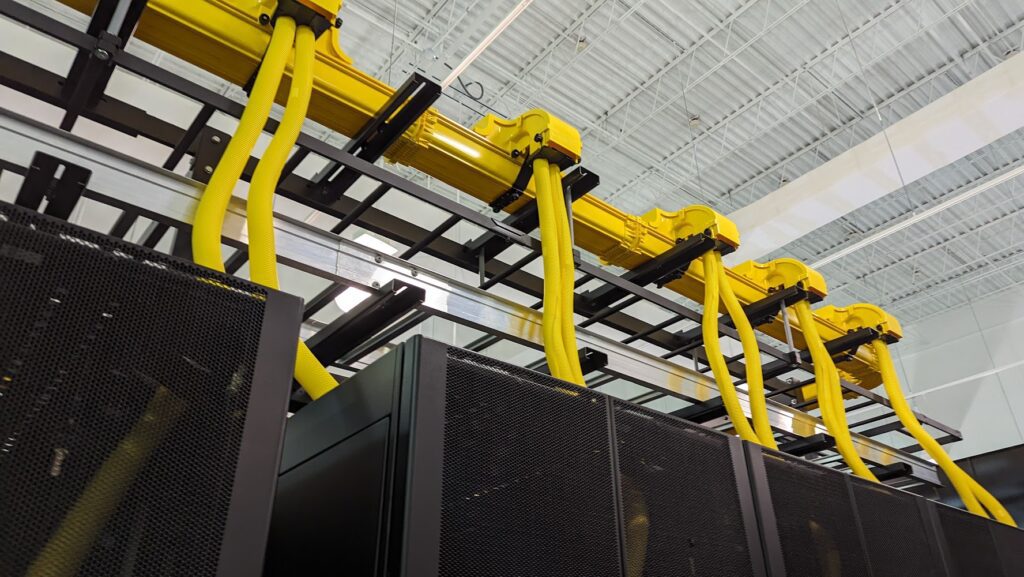Next-generation AI data centers will deploy more sustainable cooling and power technologies, like these liquid-cooled cabinets:

Here’s an overview of the cutting-edge developments underway.
Cooling technologies
- Liquid cooling: Unlike traditional air cooling, liquid cooling involves directly cooling hardware using conductive liquids. This includes immersion cooling, where components are fully submerged in non-conductive liquids, and direct-to-chip liquid cooling, which brings coolant directly to the hottest parts of the hardware.
- Phase change cooling: This technology uses the heat absorption from when a liquid changes into a gas to cool data center components. It’s an efficient way to manage high heat loads with minimal energy consumption.
- Rear door heat exchangers: These are attached to the back of server racks and use water to cool the air exiting the equipment. This method can significantly reduce the need for traditional air conditioning and improve cooling efficiency.
- Advanced thermal management materials: Innovations in materials science, such as high thermal conductivity materials (e.g., graphene) and phase change materials, are being explored to enhance heat dissipation capabilities.
Power technologies
- Renewable energy sources: Data centers are increasingly integrating renewable energy sources like solar, wind, and hydroelectric power to reduce carbon footprints and ensure sustainable operations.
- High-Voltage Direct Current (HVDC) power systems: HVDC systems can improve energy efficiency by reducing power conversion losses and simplifying power distribution infrastructure. This approach also enhances the reliability of power supplies and reduces cooling needs.
- Energy storage and management systems: Advanced energy storage systems, including battery storage and thermal storage, allow data centers to manage energy more efficiently and use renewable energy more effectively. Smart energy management systems optimize power usage in real time based on workloads and cooling requirements.
- AI-driven energy optimization: AI and machine learning algorithms are used to optimize power and cooling systems dynamically. These systems can predict workload and cooling needs, adjust power distribution, and optimize energy consumption across the data center.
- Heat recovery and reuse: Some next-gen data centers are implementing systems to capture waste heat from servers and reuse it for other purposes, such as heating buildings or supplying district heating networks. This improves overall energy efficiency and contributes to a circular economy. Win/win.
Unlike other data centers that say they can support AI/ML workloads in their data centers today, Deft can show you on a private tour that we already do. Book a private data center tour with us or schedule a time to discuss how we can support your AI workloads.
